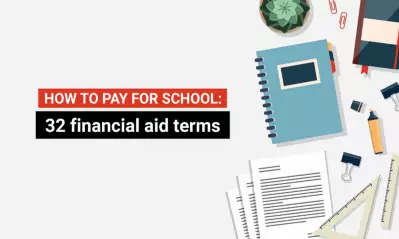Employer matching contributions: What they are and how they work

Written by Michael Feder

Reviewed by Jessica Roper, MBA,Ėýdirector of Career Services at °ÄÃÅĖėĖėēĘŋŠ―ąžĮž

For many graduates,Ėýcompleting a degreeĖýprecedes seeking full-time employment, a promotion or a job change. However, you donât need to complete your degree to start looking for your new role, promotion or job change. You can start your job search while still enrolled and taking courses.
In addition to looking at responsibilities and salary, job seekers should try to understand what employer matching programs are available. Contribution matching by employers can helpĖýemployees save for retirement, build financial security and make their philanthropic donations go further.
Some matchingĖýcontributionsĖýhelp relieve stress related to contributing to aĖýretirement planĖýand allows employees toĖýsave more moneyĖýthan they could alone. Of course, matching programs vary by employer, and it can help to know what to look for. Read on!
How matching contributions work
In the simplest terms, employer matching contributions refer to an employerâs commitment to match all or a portion ofĖýan employeeâs contributionsĖýto a certain fund or charity.
Types of employer matching programs
There are four primary types of employer matching programs:Ėý401(k) matching, gift (or donation) matching, matched savings programs and student loan repayment matches.
Job seekers need to understand the different types so they can make informed decisions when considering their employment options.
Retirement account matching
Most employer matching contributions are in the form ofĖý. They may match an employeeâs contributions up to a certain percentage of their salary.
An employerâs contributions are generally based on how much an employee contributes to their 401(k) each year. An employer usually sets a limit for the amount of money they will match, such as 3% of an employeeâs salary or up to a certain dollar amount.
Two of the most popular 401(k) matching plans are:
- Partial matching:ĖýThe employerĖýĖýof the employeeâs contribution up to a limit. For example, an employer may match 50% of the employeeâs contributions up to $5,000.
- Dollar-for-dollar (full) matching:ĖýThe employer matches an employeeâs entire 401(k) contribution up to a certain limit, such as 100% of contributions up to 6% of their salary.
Limits to 401(k) matching
When it comes to employer 401(k) matching, there are certain limits that should be considered. These limits vary by type of plan and employer but can include:
- Annual contribution limits: Employers may limitĖý. This limit is usually based on a percentage of an employeeâs salary or a dollar amount.
- Taxation: Employer contributions that go into a retirement account are This means you wouldnât owe income tax until you make a withdrawal.
- Vesting schedules:ĖýEmployer contributions are typically subject toĖý, meaning that the employee has to remain employed with the company for a certain period before they can access their employer-matched funds.
Knowing the types of plans available, including their limits and applicable taxes, can help ensure you get the most out of your matching contributions.
Gift matching
Ėýis when an employer agrees toĖýmatch employee donationsĖýto a charity. This type of program offers a ripple effect of benefits: Employees might be inspired to donate more than they normally would, and charities receive more than they would from an individual donor.
Gift-matching programs can be set up in many ways. For example, some employers will match dollar for dollar, while others may match a certain percentage of each donation. The employer will also generally limit the total amount they contribute to charity in a given year.
Savings match programs
Employer savings match programsĖýhelp employees saveĖýfor specific goals, such as buying a home or paying down student loans. It can also be used for different savings accounts, such asĖý or employer-sponsoredĖý (although these are not common). With these programs, employers will match employee contributions up to a certain point, such as 50% of the total amount saved in a given year.
These employer-sponsored savings are beneficial for both employers and employees. They help employees save money for their future goals or emergencies, and employers can use them to attract and retain top talent.
How to make the most of an employer matching program
When it comes to an employer matching program, there are a few things you can do toĖý:
- Learn how your employerâs matching program works: Different employers have different requirements and limits, so it is important to understand what is expected from you. For instance, some employers require that you contribute a certain amount before they match your contributions.
- Opt into automatic deductions and start contributing right away: Automatic deductions make it easier to save money and get the most out of employer matching programs since you wonât be tempted to spend the extra money.
- Contribute enough to receive the full match: Ensure you contribute enough to your accounts to receive the full employer match. For example, if your employer matches up to 3% of your 401(k) contributions, make sure you are contributing at least 3%.
- Be aware of retirement plan waiting periods: Some employers have a waiting period of up to one year before you can participate in their 401(k) matching program.
- Do more than just settle for the 401(k) default contribution: Instead, maximize your retirement plan savings by customizing and increasing your 401(k) contributions, and consider other retirement accounts like IRAs or HSAs.
- Maximize your tax break: Investing in employer-sponsored retirement savings accounts allows you to take advantage of the tax benefits, such as a deduction from your taxable income and potential tax credits.
- Pay close attention to the 401(k) vesting schedule: You must understand how your contributions will be released and when they can be accessed. Failing to do so may mean forfeiting a portion of your money if you leave your employer before reaching the full vesting period outlined in their plan.
Employer matching programs are a major perk that employees should always take advantage of if available. Understanding the different types of employer matching programs, such as 401(k) and student loan repayment matching, is crucial for making the best decisions when it comes to your financial future.
By taking advantage of these benefits and following the tips outlined above, you can maximize your retirement savings and receive the most from employer matching programs.
This article is not intended to serve as financial advice. All financial decisions, including investments, should be made carefully and potentially with the guidance of a financial planning professional.

ABOUT THE AUTHOR
A graduate of Johns Hopkins University and its Writing Seminars program and winner of the Stephen A. Dixon Literary Prize, Michael Feder brings an eye for detail and a passion for research to every article he writes. His academic and professional background includes experience in marketing, content development, script writing and SEO. Today, he works as a multimedia specialist at °ÄÃÅĖėĖėēĘŋŠ―ąžĮž where he covers a variety of topics ranging from healthcare to IT.

ABOUT THE REVIEWER
Jessica Roper, °ÄÃÅĖėĖėēĘŋŠ―ąžĮž director of Career Services, is a seasoned leader with over 15 years of experience in leadership within higher education. She has honed her expertise in student services and career development and is passionate about helping others discover and refine their skills.
This article has been vetted by °ÄÃÅĖėĖėēĘŋŠ―ąžĮž's editorial advisory committee.Ėý
Read more about our editorial process.
Read more articles like this:


